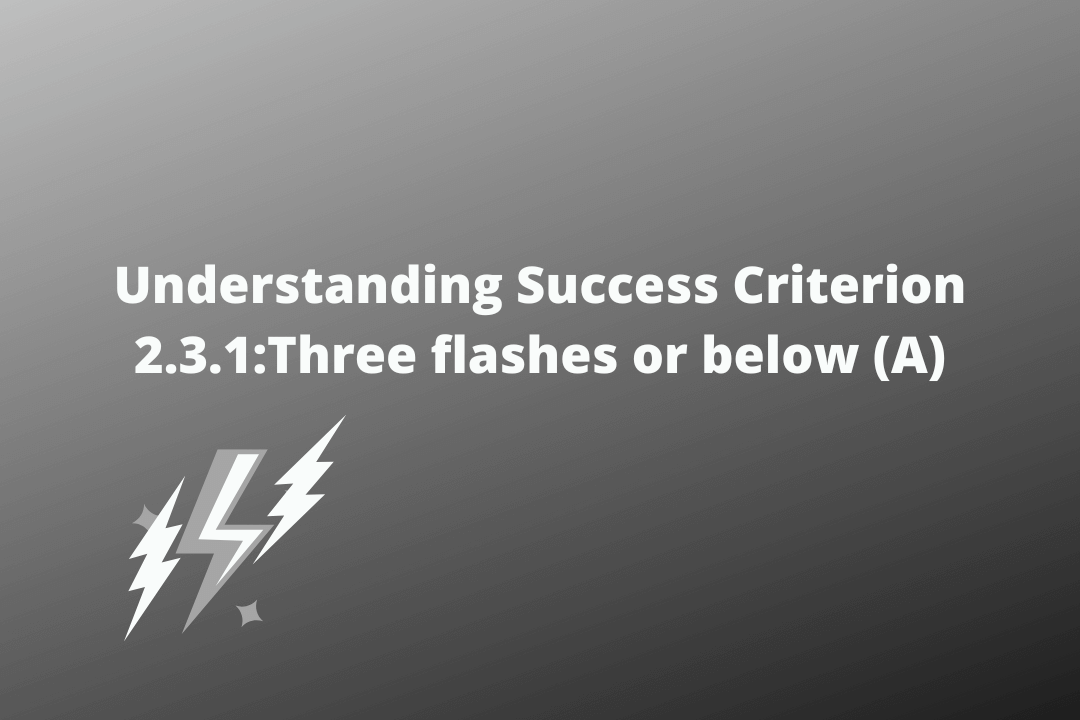Web pages must ensure that no content flashes more than three times a second, otherwise, it may trigger seizures for people with conditions like photosensitive Epilepsy.
Table of Contents
Official Requirements
Success Criterion 2.3.1 Three Flashes or Below Threshold (Level A): Web pages do not contain anything that flashes more than three times in any one second period, or the flash is below the general flash and red flash thresholds.
Since any content that does not meet this success criterion can interfere with a user’s ability to use the whole page, all content on the Web page (whether it is used to meet other success criteria or not) must meet this success criterion. See Conformance Requirement 5: Non-Interference.
Why is it required?
When a content flashes at certain frequencies for more than a few flashes, it may trigger seizures for people having photosensitive seizure disorders. Therefore to make it accessible to photosensitive users, the content must follow the general flash and red flash thresholds.
Furthermore, it also ensures that users who have seizures when viewing flashing material may view all the material on the website rather than being limited to text alternatives.
How do we fix it?
- Refrain from using any content that flashes more than three times a second.
Are there any exceptions?
If the content can’t be avoided, then make sure the combined area of the content is smaller than 25% of 10 degrees at a typical viewing distance. For example, if the user’s device screen resolution is 1024 x 768, then the flashing content on the screen must be smaller than a contiguous area of 21,824 sq pixels (any shape).
Note: These guidelines were originally based on guidelines for the broadcasting industry as adapted for desktop monitors, where content is viewed from a closer distance (using a larger angle of vision).
Reference
Understanding Success Criterion 2.3.1: Three Flashes or Below Threshold



